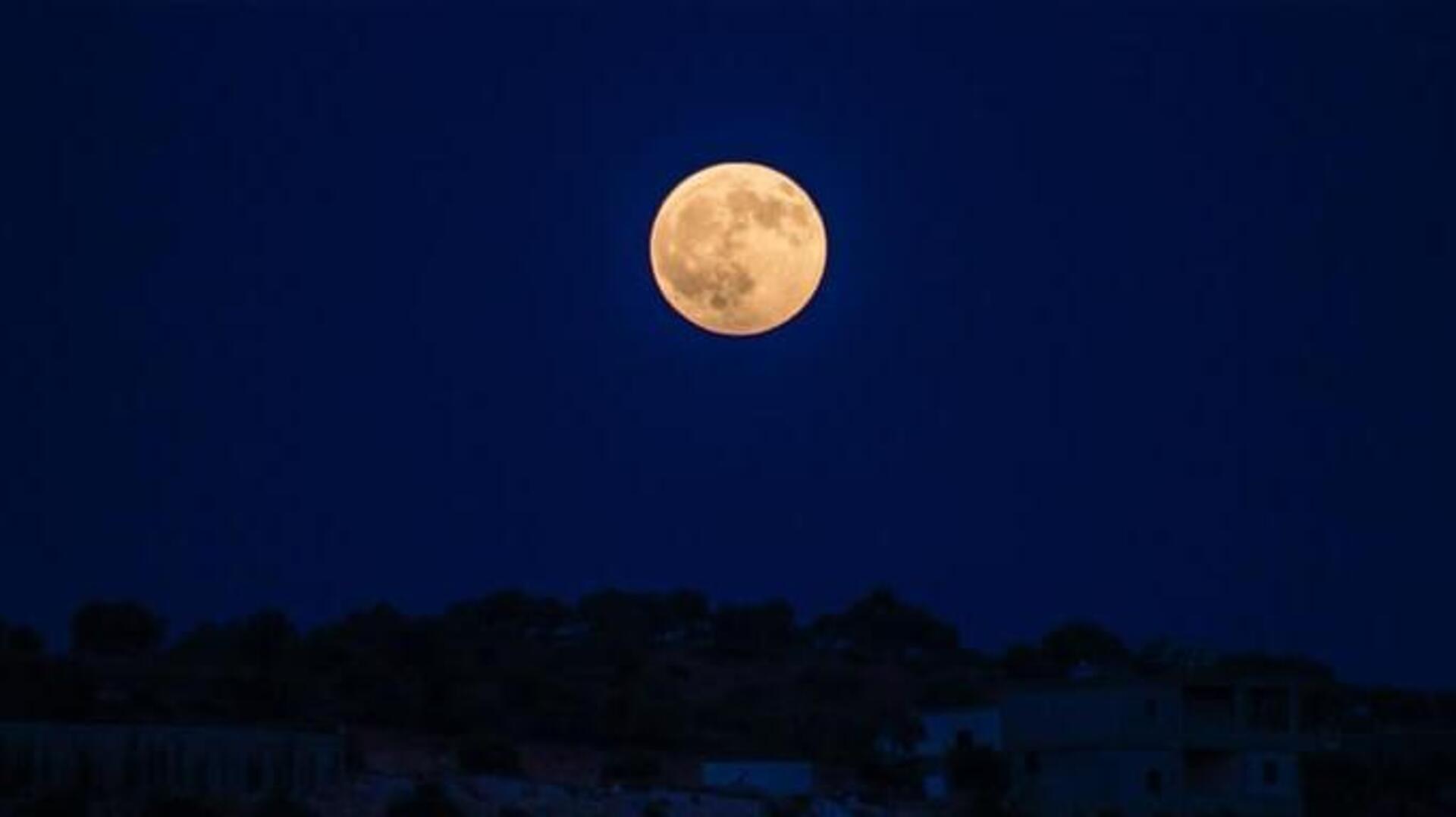
July 2023 supermoon: Know significance of tonight's full moon
What's the story
We will get to see four supermoons this year, and the first one will be visible tonight. July's full moon, also called Buck Supermoon, will appear brighter than any full moon that we have seen so far in 2023. Provided the weather conditions are favorable, you will see the full moon light up the night sky in the southeast direction after the sun sets.
Supermoon
What is supermoon?
The term supermoon was coined by astrologer Richard Nolle in 1979. It occurs when new moons or full moons lie within 90% of perigee-Moon's closest point to Earth. Supermoons are relatively closer to Earth. Monday's Buck Supermoon will be about 361,933km away. For reference, an average full moon is roughly 384,472km from Earth, meaning Moon will appear about 22,539km closer to Earth on Monday.
Brightness
Supermoons are brightest, biggest full moons
Supermoons are 16% brighter than average full moons. In addition, they are also the biggest full moons seen in a year, per NASA. During this time, Moon will appear to be slightly bigger than average full moons in the night sky. However, the change in Moon's size is not all that obvious to the naked eye.
Naming
July's full moon gets name from Maine Farmer's Almanac
So why is July's full moon called the Buck Moon? It gets this interesting name from the Maine Farmer's Almanac, which started publishing Native American names for full moons in the 1930s. Around this time in early summer, bucks grow out their antlers and hence the name. Notably, it is also called the Thunder Moon because of the frequent thunderstorms in this season.
Bright
You can also spot Venus, Mars today
Shortly after sunset on Monday evening, you will be able to see the full moon rising above the southeastern horizon. While the full moon is the main highlight in the night sky on Monday, you can also spot Venus and Mars. Venus will be shining brightly at about 11 degrees, and Mars at 14 degrees above the western horizon.
Upcoming events
Four supermoons will occur this year
We will see three more supermoons in a row over the next two months. August has two supermoons. One on August 1, called the Sturgeon Moon and the other on August 30, called the Blue Moon. The latter will be the closest full Moon of the year. The final supermoon of 2023, called the Harvest Moon, will fall on September 28.